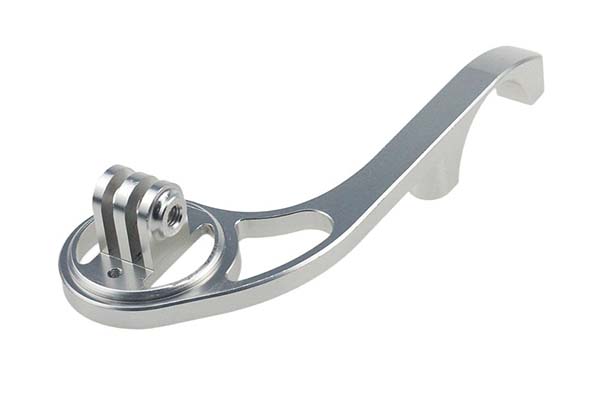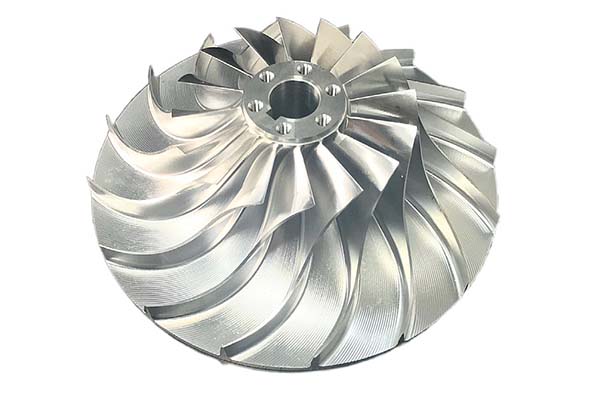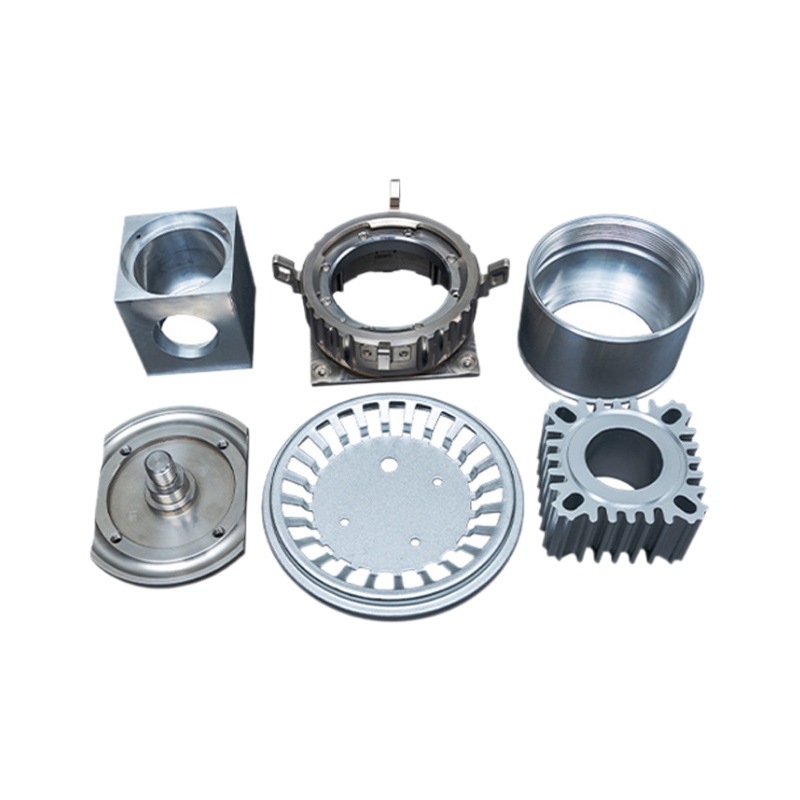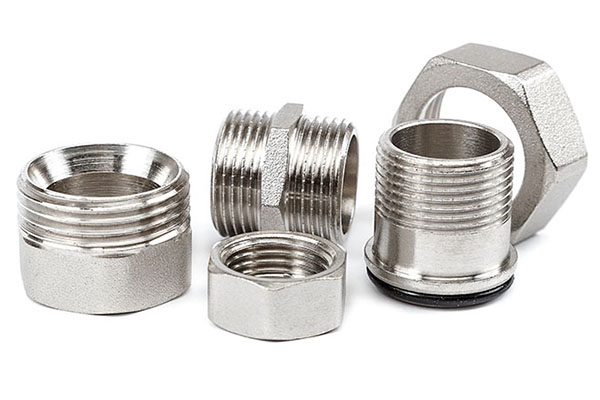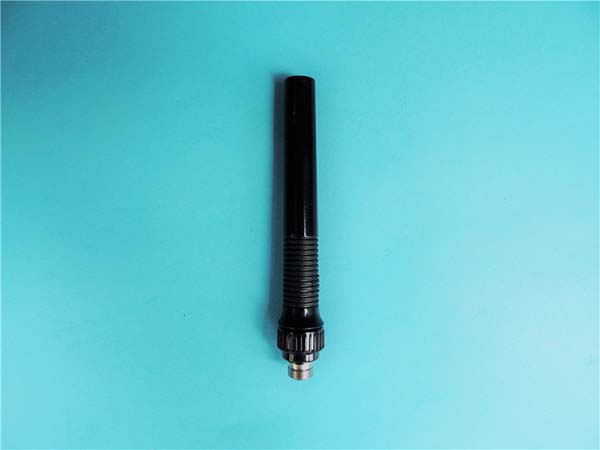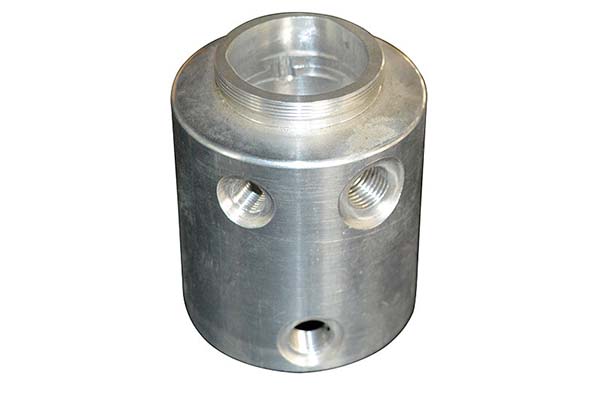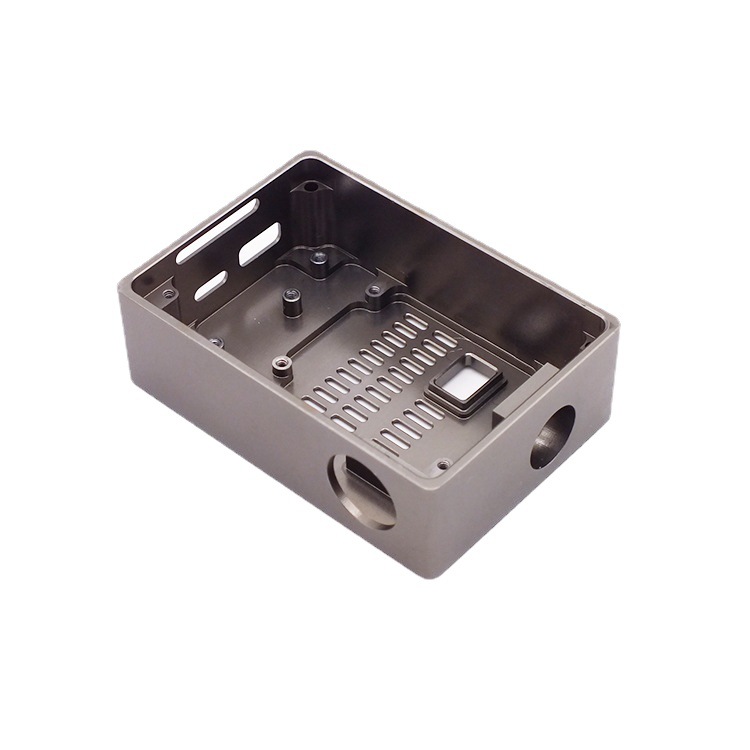Manufacturers dealing with harsh chemical environments often turn to SS317 stainless steel for its exceptional corrosion resistance. As an austenitic stainless steel, it offers superior protection against acids, chlorides, and industrial chemicals, but machining it comes with unique challenges. Its high alloy content, while boosting corrosion resistance, increases work hardening tendencies, leading to rapid tool wear and elevated cutting forces. Additionally, its non-magnetic properties and high ductility demand precise cutting parameters to avoid chip control issues. Distinguishing its capabilities from other austenitic grades like SS316 or SS304 is crucial to avoid over-engineering or performance gaps. This guide addresses these pain points, offering proven strategies to optimize CNC machining SS317 for efficiency, quality, and reliability in high-corrosion applications.
Material Overview of SS317
SS317 stainless steel is an austenitic alloy engineered for extreme corrosion resistance and versatility:
- Mechanical properties: It boasts a tensile strength of 515 MPa, yield strength of 205 MPa, and hardness of 18-22 HRC in the annealed state. Its ductility (40% elongation) makes it suitable for forming, while maintaining strength in both low and moderate temperatures.
- Corrosion resistance: Exceptional in harsh environments, including sulfuric acid, chloride solutions, and industrial waste. Its 18-20% chromium content and 11-15% nickel content, combined with 3-4% molybdenum, outperforms SS316 in high-chloride applications, resisting pitting and crevice corrosion.
- High sulfur content: A key feature in free-machining variants (SS317F), improving chip breakage and reducing tool wear—though slightly lowering corrosion resistance compared to standard SS317.
- Chemical composition: Contains 18-20% chromium, 11-15% nickel, 3-4% molybdenum, and 0.08% maximum carbon. Free-machining grades add 0.15-0.35% sulfur to enhance free-machining properties.
- Magnetic properties: Non-magnetic in all conditions, unlike martensitic grades—ideal for applications requiring magnetic neutrality.
- Weldability: Excellent, with post-weld annealing optional for most applications due to its low carbon content, which minimizes carbide precipitation and intergranular corrosion.
These traits make SS317 ideal for chemical processing equipment, food processing machinery, and marine components exposed to saltwater.
CNC Machining Processes for SS317
Core Machining Operations
CNC machining SS317 requires careful control to manage work hardening and chip formation, with processes tailored to its high ductility:
- CNC milling: Effective for shaping chemical reactor components and food processing equipment. Climb milling reduces work hardening by minimizing tool contact with already deformed surfaces, lowering cutting forces by 10-15%.
- CNC turning: Suitable for cylindrical parts like pump shafts and valve bodies, with moderate feed rates to balance material removal and heat buildup.
- CNC drilling and CNC boring: Challenging due to high ductility; sharp tools and peck drilling (intermittent 进给) prevent chip clogging, critical for deep holes in chemical tanks.
- Machining centers and multi-axis machining: Enhance efficiency for complex parts like heat exchangers, ensuring dimensional consistency across corrosion-prone surfaces.
Optimal Cutting Parameters
| Operation | Cutting Speed (m/min) | Feed Rate (mm/rev) | Depth of Cut (mm) |
| CNC milling (carbide) | 90-150 | 0.1-0.2 | 1-3 |
| CNC turning (carbide) | 100-180 | 0.12-0.25 | 1.5-4 |
| CNC drilling (carbide) | 70-120 | 0.08-0.15 | 1-2.5 |
These parameters account for SS317’s higher work hardening tendency compared to SS316, with cutting speeds 5-10% lower to minimize heat-induced material hardening.
Tool Selection and Tooling for SS317
Choosing the Right Tools
Tool selection for CNC machining SS317 focuses on wear resistance and chip control:
- Cutting tools: Carbide tools are preferred over high-speed steel due to their superior heat resistance. Fine-grain carbide (WC-Co with 6-8% Co) offers the best balance of toughness and wear resistance for SS317’s abrasive nature.
- Tool coatings: AlTiN coatings extend tool life by 40-60% compared to uncoated carbide, thanks to their high hardness (3500 HV) and reduced friction, which minimizes heat buildup.
- Tool geometry: Positive rake angles (5-10°) reduce cutting forces, while sharp edges for cutting minimize work hardening. Round inserts with large radii work well for roughing, while square inserts with honed edges excel in finishing.
- Tool holders: Rigid, shrink-fit holders minimize tool deflection, critical for maintaining tolerances in high-force cutting—common when machining thick-walled chemical equipment.
- Coolant delivery systems: High-pressure coolant (70-120 bar) directed at the cutting zone flushes chips and reduces heat, preventing work hardening and tool overheating.
Chip Control Strategies
Poor chip control in SS317 leads to tool damage and surface defects. Effective strategies include:
- Using tools with aggressive chip breakers designed for austenitic stainless steels, especially in turning operations on large-diameter parts.
- Adjusting feed rates to promote short, curly chips—avoiding long, stringy chips that wrap around tools and cause heat buildup.
- Implementing high-volume coolant flow (10-15 L/min) to flush chips away from the cutting zone, preventing re-cutting and work hardening.
Surface Finish and Quality Control
Achieving Desired Surface Characteristics
SS317’s surface finish directly impacts corrosion resistance, as rough surfaces trap contaminants and accelerate pitting:
- Surface roughness: Achievable Ra values range from 0.8 μm (finish machining) to 3.2 μm (roughing). Chemical processing parts often require Ra ≤ 1.6 μm to minimize particle adhesion, while food processing equipment may need Ra ≤ 0.8 μm for easy cleaning.
- Surface finish requirements: Marine components benefit from smooth finishes (Ra ≤ 1.6 μm) to resist saltwater-induced pitting, while industrial valves require consistent finishes to ensure proper sealing.
- Finishing processes: Electrochemical finishing enhances corrosion resistance by removing micro-burrs, while polishing creates a smooth, contamination-resistant surface ideal for pharmaceutical equipment.
Quality Control Measures
- Inspection methods: Coordinate Measuring Machines (CMM) verify dimensional accuracy, while profilometers check surface roughness (Ra, Rz). Salt spray testing (per ASTM B117) ensures corrosion resistance meets specifications.
- Quality control standards: Compliance with ASTM A240 (sheet/plate) and ASTM A276 (bars) guarantees material consistency, including alloy content and corrosion resistance.
- Surface defects to monitor: Tool marks and scratches act as corrosion initiation points. Grinding removes these defects, improving both performance and longevity in harsh environments.
Heat Treatment and Post-Machining Processes
Heat Treatment for SS317
SS317 requires minimal heat treatment but benefits from specific processes to optimize performance:
- Solution annealing: Heating to 1040-1150°C, followed by water quenching, dissolves carbides and ensures a uniform austenitic structure. This process softens the material (to 18-22 HRC) and maximizes corrosion resistance, typically performed before machining.
- Stress relief annealing: Heating to 300-500°C for 1-2 hours reduces residual stresses from machining, preventing distortion in large parts like chemical tanks during service.
Post-Machining Processes
- Post-machining cleaning: Ultrasonic cleaning removes coolant residues and chips, preventing contamination that could compromise corrosion resistance.
- Passivation: A nitric acid treatment enhances the chromium oxide layer, boosting corrosion resistance by 30-40% in chloride environments—critical for marine and chemical applications.
- Electropolishing: Optional for high-purity applications, this process improves surface smoothness and corrosion resistance by removing a thin layer of material (5-10 μm).
Applications of SS317 Machined Parts
SS317 stainless steel excels in environments where corrosion resistance is paramount:
- Chemical processing equipment: Reactors, pumps, and valves handling sulfuric acid, phosphoric acid, and chloride solutions—outperforming SS316 in high-concentration applications.
- Food processing machinery: Mixers, conveyors, and storage tanks resistant to cleaning chemicals and food acids, ensuring compliance with FDA standards.
- Marine components: Propeller shafts, hull fittings, and seawater intake systems—withstanding saltwater corrosion 2-3x longer than SS304.
- Medical devices: Sterilization equipment and surgical tools resistant to autoclave chemicals and bodily fluids.
- Industrial waste treatment: Pipes and filters handling corrosive sludge and wastewater, reducing maintenance costs in harsh environments.
In sulfuric acid processing, for example, SS317 components last 5-7x longer than SS316 due to its higher molybdenum content, justifying its higher material cost.
Technical Specifications and Standards
Adhering to industry standards ensures SS317 parts meet corrosion and performance requirements:
- ASTM standards: ASTM A240 (sheet/plate), ASTM A276 (bars), and ASTM A312 (tubing) define chemical composition, mechanical properties, and quality requirements.
- ISO standards: ISO 15510 specifies technical delivery conditions for austenitic stainless steels, including SS317.
- Machining tolerances: Achievable tolerances of ±0.01 mm for small parts and ±0.05 mm for large components, with tighter tolerances (±0.005 mm) possible via post-machining grinding.
- Quality certifications: Compliance with ISO 9001 and ISO 13485 (medical) ensures consistent manufacturing quality for regulated applications.
Challenges and Solutions in Machining SS317
Overcoming Key Machining Challenges
CNC machining SS317 presents several challenges, but targeted solutions yield reliable results:
- Work hardening: More severe than in SS316 due to higher alloy content. Using sharp AlTiN-coated carbide tools and light depths of cut (≤2 mm) minimizes work hardening by reducing tool contact time.
- High cutting forces: 10-15% higher than SS316, requiring rigid machine tools with high torque spindles (≥35 Nm) to prevent tool deflection and maintain accuracy.
- Heat generation: Friction-induced heat softens tools and accelerates work hardening. Intermittent cutting cycles and high-pressure coolant (100 bar) dissipate heat, extending tool life by 30-40%.
- Tool wear: Rapid wear from abrasion and heat. AlTiN-coated carbide tools last 40-60% longer than uncoated tools, offsetting their higher cost in high-volume production.
- Surface defects: Easily marred by dull tools. Maintaining sharp cutting edges and using low feed rates (≤0.15 mm/rev) in finishing operations ensures defect-free surfaces.
Cost and Efficiency Considerations
Balancing Performance and Cost
CNC machining SS317 is more expensive than machining SS316 or SS304, but strategic choices optimize efficiency for high-corrosion applications:
- Machining cost: 15-20% higher than SS316 due to slower cutting speeds, increased tool wear, and higher material cost. This premium is justified by 2-3x longer service life in harsh chemical environments.
- Tool cost: AlTiN-coated carbide tools cost 2-3x more than uncoated carbide but reduce replacement frequency by 40-60%, lowering total tooling expenses in long runs.
- Production rate: Typical rates of 20-35 parts per hour for small components, 80-90% of SS316’s rate but necessary for achieving corrosion-resistant surfaces.
- Efficiency improvements: Using high-speed machining centers with rigid frames reduces cycle times by 10-15% by handling higher cutting forces without vibration.
Comparison with Other Materials
How does SS317 compare to similar corrosion-resistant materials?
| Material | Corrosion Resistance (Chlorides) | Machinability (Relative) | Cost (Relative) | High-Temp Strength (600°C) |
| SS317 | Excellent | Good (80%) | High | 65% of RT strength |
| SS316 | Very Good | Good (85%) | Medium-High | 65% of RT strength |
| SS304 | Fair | Very Good (90%) | Medium | 60% of RT strength |
| Titanium Ti-6Al-4V | Excellent | Poor (50%) | Very High | 80% of RT strength |
| Hastelloy C276 | Superior | Poor (40%) | Very High | 75% of RT strength |
- SS317 vs. SS316: SS317 offers 20-30% better chloride resistance due to higher molybdenum content, making it ideal for seawater or industrial brine applications. It is slightly harder to machine but worth the investment for extended service life.
- SS317 vs. Titanium: SS317 is easier to machine (80% vs. 50% relative to SS304) and 30-40% cheaper, with comparable corrosion resistance in most chemicals—except hydrofluoric acid, where titanium excels.
- SS317 vs. Hastelloy C276: Hastelloy offers superior corrosion resistance but costs 3-4x more. SS317 is a cost-effective alternative for all but the most extreme chemical environments.
Yigu Technology’s Perspective
At Yigu Technology, we specialize in CNC machining SS317 for chemical processing and marine clients. Our data shows that using AlTiN-coated carbide tools with 100-bar coolant reduces tool wear by 50% compared to standard setups. We recommend solution annealing before machining to ensure uniform corrosion resistance and dimensional stability. For critical parts, we perform 100% CMM inspections and salt spray testing to verify compliance with ASTM A240. Our expertise in machining high-molybdenum stainless steels ensures SS317 components meet the strict corrosion resistance requirements of chemical, food, and marine applications—delivering reliable performance in harsh environments.
FAQ
- What makes SS317 ideal for chemical processing?
SS317’s high molybdenum content (3-4%) enhances resistance to chlorides and acids, outperforming SS316 in high-concentration chemical environments. Its austenitic structure also resists stress corrosion cracking, critical for reactor and pump components.
- How does SS317’s machinability compare to SS316?
SS317 is slightly harder to machine due to higher alloy content, requiring 5-10% slower cutting speeds and more durable tools (e.g., AlTiN-coated carbide). However, free-machining variants (SS317F) with high sulfur content improve chip control, narrowing the gap.
- When should SS317 be chosen over SS316?
SS317 is preferred for applications with high chloride concentrations (e.g., saltwater, industrial brines) or exposure to strong acids (sulfuric, phosphoric), where its extra molybdenum provides 20-30% better corrosion resistance than SS316.

